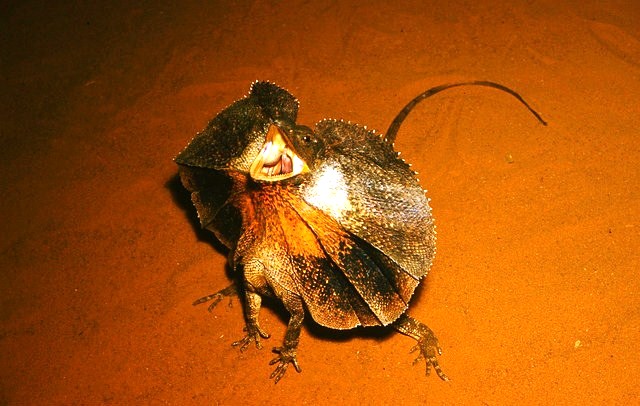|
| 질의: Black ruff | 결과: 72번째/85 | |
Frilled lizard
| 제목: | Frilled lizard
| | 올린이: | Axis (ground_assault_11@yahoo.com)
| |

| 해상도: 640x406
파일크기: 82600 Bytes
촬영일: 2018:05:29 00:59:18
등록시간: 2018:05:29 02:58:00
|
Frilled lizard, pale brown Australian lizard with a fold of skin that spreads into a ruff when the mouth is opened in aggressive display. The cartilaginous frill has serrated edges with red, black and brown spots. It can be raised to 20cm. Length: to 90cm. Family Agamidae; species Chlamydosaurus kingii. |
^o^
동물그림창고 똑똑전화 누리집
^o^
|
|